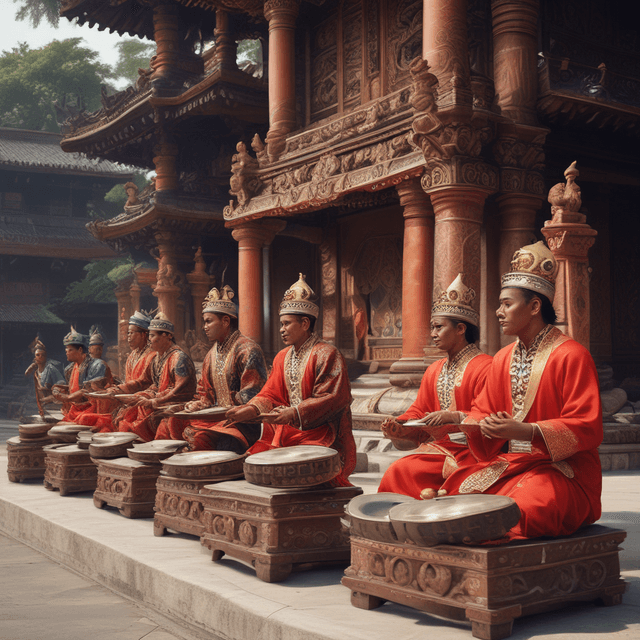
| Spread | Throughout Southeast Asia as Majapahit's influence expanded |
| Origins | |
| Tradition | Rich, polyphonic music centered around bronze percussion instruments |
| Regional Styles | Diverse regional styles evolved over time |
| Recent Resurgence | Underwent global resurgence as a symbol of cultural identity and heritage as Southeast Asian nations gained independence |
| Continued Importance | Remained vital for royal ceremonies, temple rituals, and community celebrations |
| Cultural Significance | Deeply intertwined with cultural and religious traditions of regional courts and sultanates |
Gamelan refers to the traditional ensemble music of Indonesia, especially associated with the islands of Java and Bali. At its core, the gamelan is a collection of bronze percussion instruments - primarily mallets and metallophones - performed in complex, multilayered rhythmic and harmonic structures. However, gamelan encompasses a diverse array of regional styles, instruments, and performance traditions that have evolved over centuries across Southeast Asia.
The origins of gamelan can be traced back to the Majapahit Empire, a powerful 13th-14th century Javanese kingdom that dominated much of the Malay Archipelago. According to historical accounts, the Majapahit court developed a highly sophisticated tradition of gamelan music as part of its elaborate system of royal rituals and ceremonies. This early gamelan sound featured a predominance of bronze percussion, emphasizing cyclic rhythmic structures and rich, atmospheric textures.
As the Majapahit Empire expanded its influence across the region, its gamelan tradition spread to other islands, including Bali, Sumatra, Sulawesi, Borneo and the Maluku Islands. Local rulers incorporated gamelan into their own court cultures, leading to the rise of distinct regional styles over the following centuries.
While sharing certain core features, gamelan music exhibits tremendous diversity across the various Indonesian and Malaysian cultural spheres. Some key differences include:
Despite these variations, gamelan music across Southeast Asia shares an emphasis on collective, collaborative performance and a unique sonic aesthetic prized for its shimmering, hypnotic qualities.
Gamelan has long been closely linked to the power and prestige of royal courts and sultanates across the Malay world. Rulers patronized elite gamelan ensembles as part of elaborate palace rituals, using the music to project an aura of spiritual and political authority. Certain prestigious gamelan instruments, like the gender wareng xylophone, were even believed to possess magical powers.
As Southeast Asian kingdoms gradually came under European colonial rule, the colonizers often sought to incorporate gamelan into their own cultural frameworks. Dutch administrators in the Dutch East Indies, for instance, enthusiastically documented and preserved Javanese and Balinese gamelan traditions, seeing them as a valuable part of indigenous culture. This laid the groundwork for gamelan's later spread and appreciation in the West.
In the 20th century, as Southeast Asian nations gained independence from colonial powers, gamelan experienced a vibrant cultural revitalization. Musicians, scholars, and nationalist movements worked to preserve and promote gamelan as a symbol of regional identity and heritage. This led to its increasing popularity and dissemination around the world.
Today, gamelan ensembles can be found in universities, museums, and communities across Europe, the Americas, and Asia, with gamelan becoming an important part of the global world music and new age music scenes. Innovative composers have also incorporated gamelan aesthetics and instrumentation into cutting-edge contemporary classical music works. Through this ongoing global engagement, the rich, meditative sounds of the gamelan continue to captivate and inspire audiences worldwide.